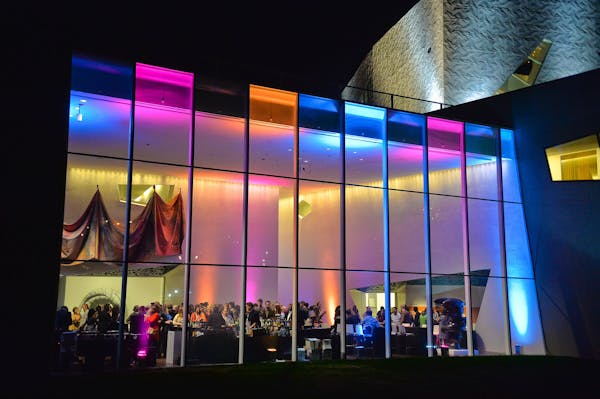While the Walker's "International Pop" show is a big deal, it is not unique in its scale. Minnesota museums regularly organize exhibitions that cost millions, require national and international collaboration, and bring to the state rare art and educational artifacts from around the world.
"Space: An Out-of-Gravity Experience," on exhibit at the Science Museum of Minnesota through Sept. 7, is the most complex and expensive show in the museum's history. Developed in partnership with the California Science Center in Los Angeles, it includes games, water rockets, drop towers and a full-scale rotating lab that simulates the weightlessness experienced by scientists aboard the International Space Station.
The St. Paul museum and the Los Angeles institution invested $3 million each to develop the exhibit; $2 million of the Science Museum's funding came in grants from NASA and the rest from private sources.
"The research and development on this stuff is incredibly expensive," said Paul Martin, a senior vice president at the museum.
Museums regularly extend the shelf life of their hard work and research by sending their shows to other cities, where they are seen by millions more. After it closes Aug. 29, "I Pop" will travel to museums in Dallas and Philadelphia through 2016. "Space" will tour at least five other museums around the country and parts of it may be replicated for other institutions.
Shows produced by the Science Museum during the past 37 years have been seen by more than 35 million people nationwide. Rental fees and shared expenses help defray the initial development costs of big projects like "Space," while enabling the St. Paul museum to educate more people in a cost-efficient way.
"It's a balance between mission and margin," Martin said, adding that "high quality and good educational exhibits also have monetary value for the museum."
The Minneapolis Institute of Arts (MIA) also partnered with other institutions for its current blockbuster, "The Habsburgs: Rarely Seen Masterpieces From Europe's Greatest Dynasty." The art came from the Kunsthistorische Museum in Vienna, most of it never previously shown outside Austria. To defray the costs of transatlantic shipping, catalog publication and marketing, the MIA collaborated with museums in Houston and Atlanta, where the show will travel after it closes in Minneapolis on May 10.
MARY ABBE
